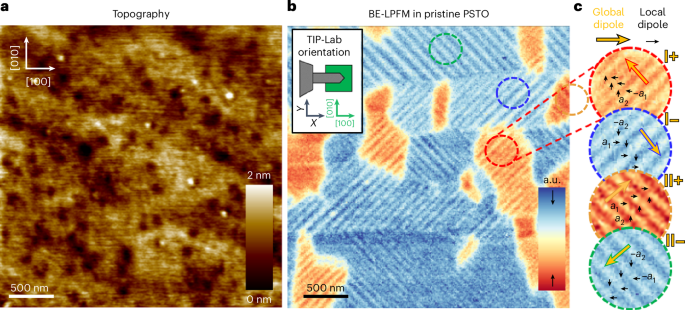2024-10-07 オークリッジ国立研究所(ORNL)
<関連情報>
- https://www.ornl.gov/news/nanoscale-method-boosts-materials-advanced-memory-storage
- https://www.nature.com/articles/s41565-024-01792-1
面内強誘電体トポロジーのオンデマンド・ナノエンジニアリング On-demand nanoengineering of in-plane ferroelectric topologies
Marti Checa,Bharat Pant,Alexander Puretzky,Bogdan Dryzhakov,Rama K. Vasudevan,Yongtao Liu,Pravin Kavle,Arvind Dasgupta,Lane W. Martin,Ye Cao,Liam Collins,Stephen Jesse,Neus Domingo & Kyle P. Kelley
Nature Nanotechnology Published:26 September 2024
DOI:https://doi.org/10.1038/s41565-024-01792-1

Abstract
Hierarchical assemblies of ferroelectric nanodomains, so-called super-domains, can exhibit exotic morphologies that lead to distinct behaviours. Controlling these super-domains reliably is critical for realizing states with desired functional properties. Here we reveal the super-switching mechanism by using a biased atomic force microscopy tip, that is, the switching of the in-plane super-domains, of a model ferroelectric Pb0.6Sr0.4TiO3. We demonstrate that the writing process is dominated by a super-domain nucleation and stabilization process. A complex scanning-probe trajectory enables on-demand formation of intricate centre-divergent, centre-convergent and flux-closure polar structures. Correlative piezoresponse force microscopy and optical spectroscopy confirm the topological nature and tunability of the emergent structures. The precise and versatile nanolithography in a ferroic material and the stability of the generated structures, also validated by phase-field modelling, suggests potential for reliable multi-state nanodevice architectures and, thereby, an alternative route for the creation of tunable topological structures for applications in neuromorphic circuits.



